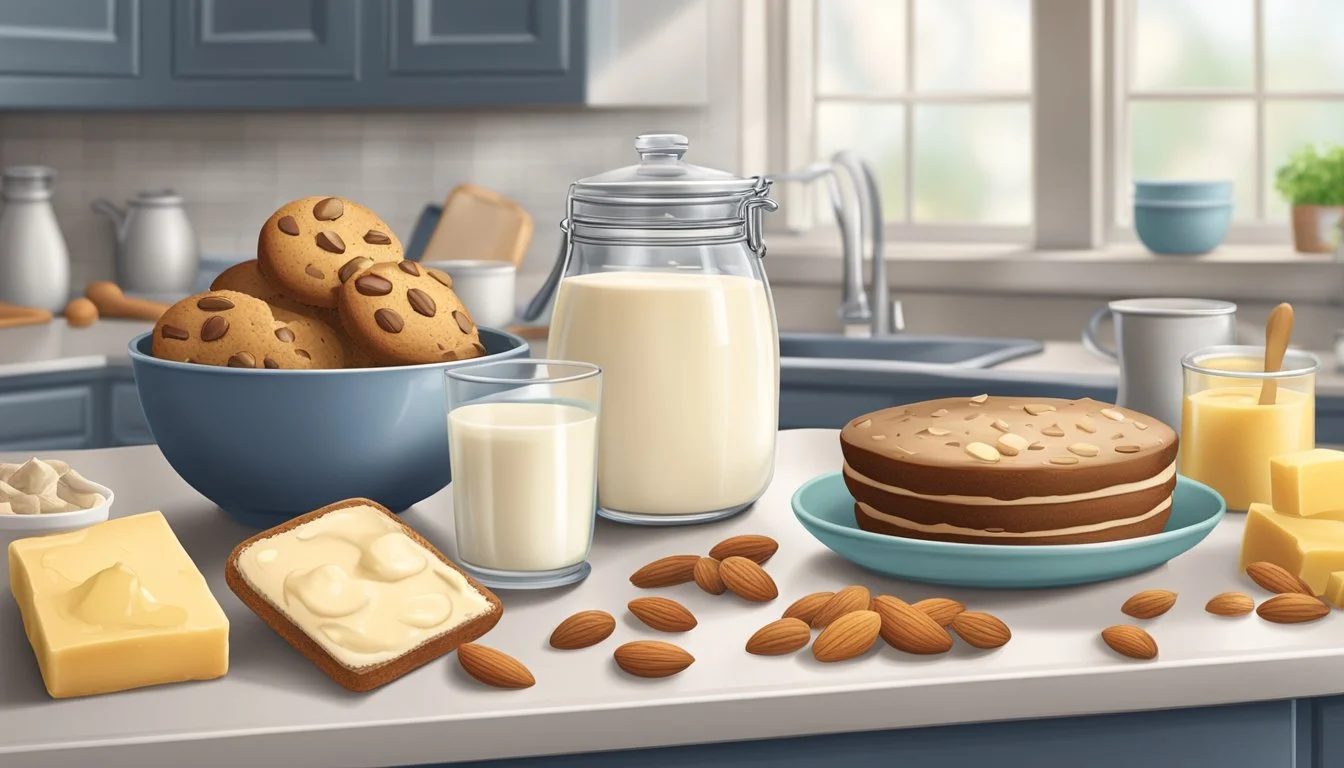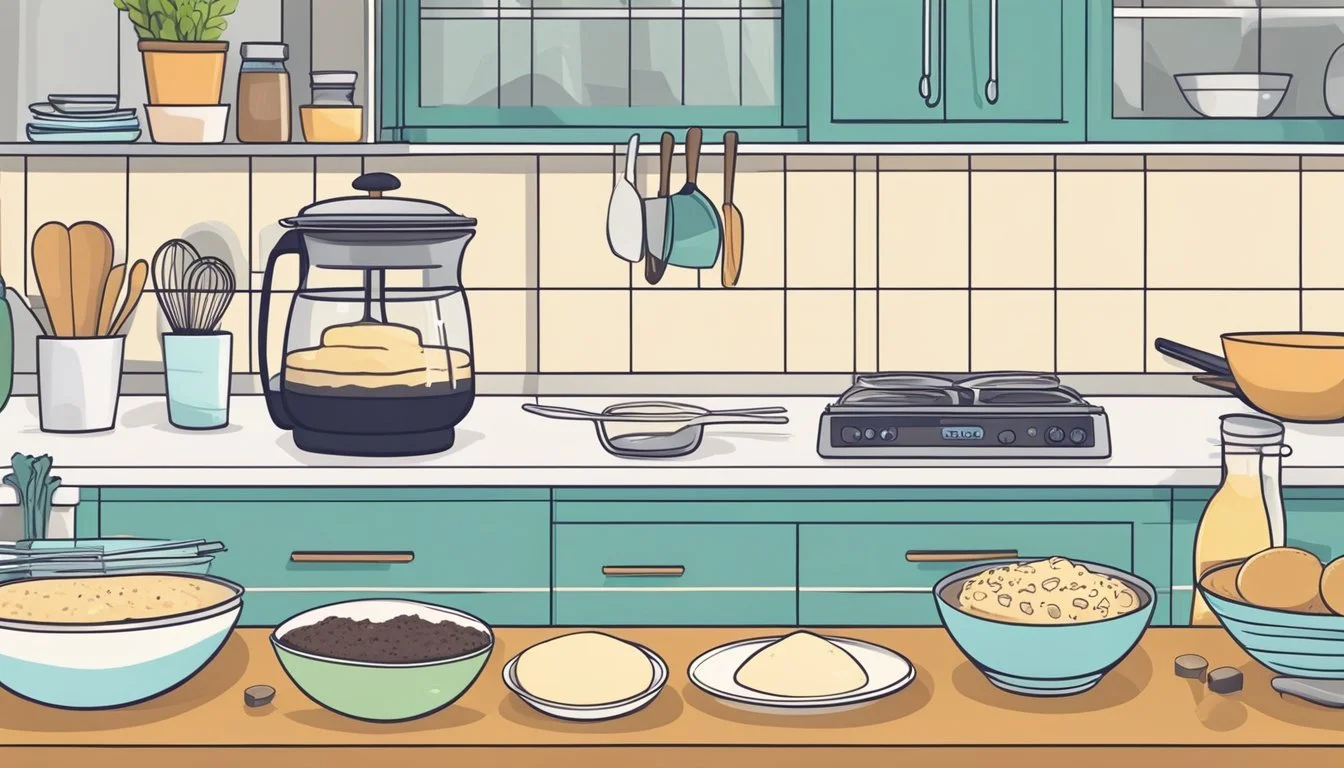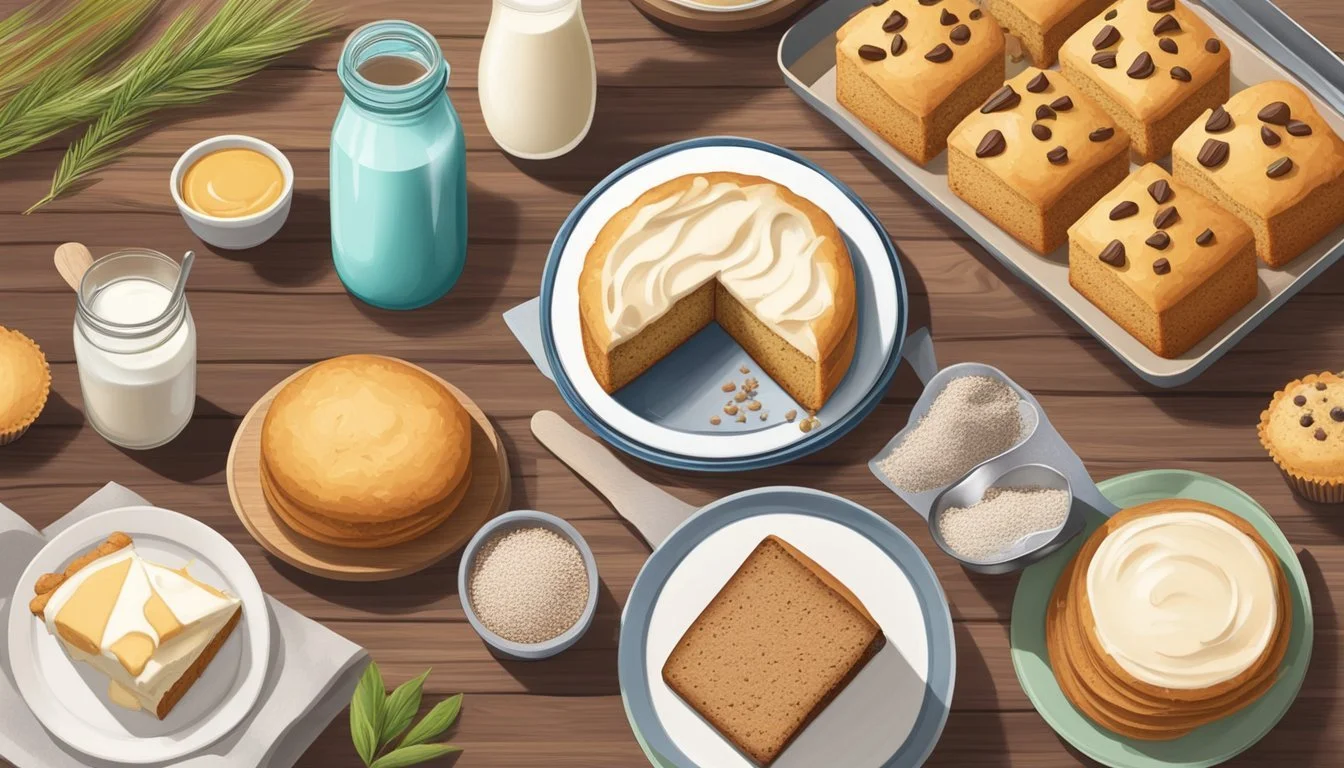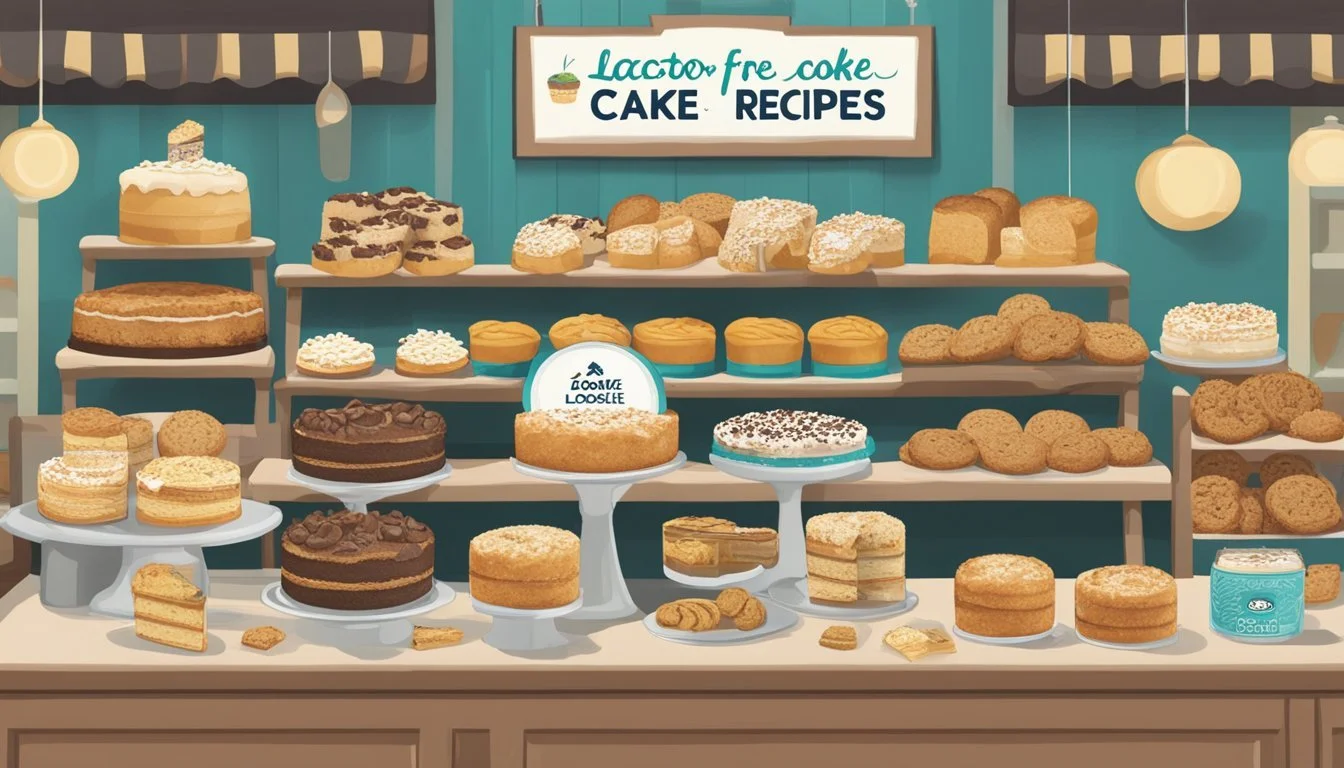What Are Some Lactose-Free Cake and Cookie Recipes?
Discover Delicious Dairy-Free Bakes
Lactose intolerance and dairy allergies are prevalent concerns for many individuals, creating a demand for lactose-free recipes that do not compromise on taste and texture. When it comes to desserts like cakes and cookies, finding delicious alternatives that cater to these dietary restrictions is essential. Fortunately, with the growing awareness and culinary innovations, there are a variety of recipes that use dairy substitutes without sacrificing the beloved flavors of traditional baked goods.
Cakes and cookies are staple desserts in many cultures, and lactose-free versions are no exception. By substituting lactose-containing ingredients like milk, butter, and cream, bakers can create delectable treats that are accessible to those with dairy sensitivities or allergies. Ingredients such as non-dairy milk like almond, soy, or coconut milk, as well as alternatives to butter such as oils or dairy-free margarine, can be used to craft a wide array of lactose-free cakes and cookies that everyone can enjoy.
The key to a successful lactose-free dessert lies in understanding the function of dairy in baking and selecting appropriate substitutes that maintain moisture, richness, and structure. For example, using high-fat non-dairy milk can replicate the creaminess in pudding cakes, while vegan butter can mimic the texture needed in recipes like Bee Sting Cake. With the correct modifications, even classic treats like chocolate chip cookie cakes and vanilla cakes can be transformed into lactose-free versions that stand up to their dairy counterparts in both flavor and consistency.
Understanding Dairy-Free Baking
Dairy-free baking allows individuals with dairy allergies or those following a vegan diet to enjoy baked goods. This process involves using plant-based substitutes without compromising on flavor and texture.
The Basics of Dairy-Free Ingredients
When transitioning to dairy-free baking, the key is to understand that dairy components like milk, butter, and cream need to be replaced with non-dairy alternatives. Dairy often provides moisture, fat, and structure to baked items, so finding suitable substitutes is crucial. Dairy-free baking is not merely about omitting dairy; it's about replacing it with other ingredients that perform similar functions in recipes.
Common Dairy-Free Baking Substitutes:
Milk: Various plant-based milks can be used, such as soy, almond, and oat milks. Each has a distinct flavor and nutritional profile. For a richer texture, one can opt for high-fat options like coconut milk.
Butter: Vegan butter and oils can serve as a fat replacement. Coconut oil is often preferred for its solid state at room temperature, much like butter.
Cream: Coconut milk or cashew cream can replicate the creaminess in recipes that require heavy cream.
It's important for individuals to read labels carefully to ensure that the substitutes are indeed dairy-free, as some may contain traces of dairy or be produced in facilities that handle dairy.
Identifying Common Dairy Substitutes
Identifying the right dairy substitutes involves looking at the role dairy plays in your recipe and choosing a non-dairy alternative that can mimic that function.
Functionality of Dairy Substitutes in Baking:
Structural: For binding and moistness, apple sauce or pureed fruits can be used.
Fat: Oils or vegan butters maintain the richness; avocados can also work in specific recipes.
Flavor: Non-dairy milks, such as almond or soy, add a mild flavor. Coconut milk adds a distinct taste and richness to the end product.
In addition to these functional roles, health considerations drive the choice of non-dairy alternatives. Soy and almond milk are often fortified with calcium and vitamins, making them nutritious choices. Allergies should also guide selection as some individuals might be allergic to nuts or soy, turning them towards oat milk or other non-nut-based milks. Experimentation is a part of the process when identifying the best dairy-free substitutes for a particular recipe.
Essential Baking Tools and Equipment
Having the proper tools and equipment is crucial for successful lactose-free baking, ensuring cakes and cookies come out perfectly every time.
Choosing the Right Cake Pans
When selecting cake pans for your lactose-free creations, one should consider material and size for optimal results. Anodized aluminum cake pans are highly recommended due to their nonreactive properties, which prevent unwanted flavors in sensitive recipes. For standard home baking, a nine-by-13-inch pan is versatile for a variety of recipes. Always line the bottom with parchment paper to facilitate easy removal of the cake, and consider having a set that includes diverse shapes and sizes to suit different occasions.
Recommended Cake Pans:
Round Pans: 8-inch or 9-inch for layer cakes
Square Pans: 9-inch for brownies or bars
Rectangular Pan: 9x13-inch for sheet cakes
Material: Anodized aluminum
Using a Cake Turntable for Decorating
A cake turntable is an essential piece of equipment for anyone who enjoys decorating cakes. It allows one to rotate the cake smoothly for even frosting application. For best results, use in conjunction with a piping bag and a variety of piping tips, such as the Wilton 1M piping tip, for creating beautiful designs. As one decorates, the use of a cake leveler can ensure layers are even and symmetrical, elevating the final appearance of your lactose-free treats.
Important Decorating Tools:
Cake Turntable: For easy and precise decorating
Piping Bag with Tips: Including the versatile Wilton 1M tip
Cake Leveler: For even layers
In addition to the above tools, it's beneficial to have a wire rack on hand for cooling cakes and cookies to prevent sogginess from trapped heat. Whether an expert or a novice in the kitchen, these tools contribute to the creation of delectable lactose-free desserts.
Lactose-Free Cake Recipes
Crafting delectable cakes without lactose is a delightful challenge embraced by many bakers. These recipes ensure everyone can enjoy a slice of sweetness, regardless of dietary restrictions.
Classic Vanilla Cake With Variations
A Classic Vanilla Cake is a timeless favorite. For those avoiding lactose, replacing regular milk with a non-dairy alternative like almond or soy milk is a straightforward swap. To enrich the cake, one can opt to use a lactose-free margarine or coconut oil in place of butter. Below is a basic outline for a lactose-free vanilla cake:
Wet Ingredients: Combine lactose-free milk, a suitable oil, and pure vanilla extract.
Dry Ingredients: Mix flour, baking powder, and a pinch of salt.
Method: Alternate adding wet and dry ingredients to create a smooth batter. Bake at a preheated temperature until a toothpick comes out clean.
Variations of vanilla cake can include the addition of citrus zest, such as lemon or orange, for a zesty twist or incorporating berry purees for a fruity infusion.
Decadent Chocolate Cake for All Occasions
Decadent Chocolate Cake can be easily made lactose-free without compromising its rich flavor. A high-quality cocoa powder forms the base, creating intense chocolate notes. For moistness, non-dairy milk and vegan butter can be incorporated. For those looking to take it up a notch, a lactose-free chocolate ganache utilizing dairy-free dark chocolate and coconut cream can be used as a luxurious topping. Here's a basic guide:
Cocoa Base: Use unsweetened cocoa powder as the main chocolate element.
Moisture: Substitute milk with lactose-free variants and butter with vegan alternatives.
Ganache: Heat coconut cream and pour over dairy-free dark chocolate, stir until smooth for the perfect ganache consistency.
Serve this cake at any celebration, and it's bound to be a crowd-pleaser.
Celebratory Vegan Cake Options
Celebratory Vegan Cakes go beyond just excluding dairy; they omit all animal products. Utilizing creative substitutes like flaxseed or chia eggs, these cakes can achieve a wonderful texture. Nut butter, such as almond or peanut butter, can add depth of flavor and richness. Vegan cake recipes often feature innovative frosting options, employing coconut cream or tofu to achieve a creamy consistency. Here is a simple framework for a vegan cake:
Binding: Flax or chia seeds mixed with water can replace eggs.
Fat: Choose from a variety of nut butters or lactose-free vegan margarine.
Frosting: Blend silken tofu or whip coconut cream to achieve a dairy-free frosting.
Such cakes are not only suitable for those with dietary limitations but are also a delightful choice for anyone seeking a plant-based dessert option.
Specialty Cakes: Gluten-Free and Nut-Free Choices
Specialty Cakes that are both lactose-free and cater to other dietary needs such as gluten intolerance or nut allergies are increasingly popular. A Gluten-Free cake can be achieved by using a mix of gluten-free flours like rice, oat, or almond flour. Xanthan gum is often added to help mimic the binding properties of gluten. For those with nut allergies, ensure that the recipe substitutes nut butters or flours with seeds or alternatives like sunflower seed butter. Here’s an approach for allergy-friendly cakes:
Gluten-Free Flour Mix: Blend a combination of gluten-free flours for the base.
Binding Agent: Include xanthan gum if needed to provide structure.
Nut-Free: Use seed-based butters or other nut-free alternatives as fat sources.
With these recipes, it becomes possible to make cakes that everyone can enjoy, regardless of specific dietary restrictions.
Creating Dairy-Free Frostings and Icings
Crafting dairy-free frostings and icings is a delightful way to cater to those with lactose intolerance or dairy allergies. Several ingredients can be used to replace dairy while still achieving a creamy texture and rich flavor in your dessert toppings.
Buttercream Alternatives Without Dairy
One can create a luscious dairy-free buttercream frosting by starting with a base of vegan butter. When choosing a vegan butter, it’s best to opt for a dairy-free salted butter for better flavor balance. To achieve the right consistency and sweetness, gradually incorporate icing sugar into the creamed vegan butter. Using a hand mixer will ensure that the mixture becomes light and fluffy. If needed, dairy-free milk can be added to the frosting to reach the desired thickness. A dash of pure vanilla extract will provide the classic buttercream taste. This alternative is not only dairy-free but can also be made soy-free if an appropriate vegan butter is chosen.
Ingredients:
Vegan butter
Icing sugar
Dairy-free milk (as needed)
Pure vanilla extract
Rich Chocolate Ganache Without Cream
A chocolate ganache without any dairy can be just as decadent as its cream-based counterpart. By using dairy-free dark chocolate and substituting dairy milk with a non-dairy alternative, such as almond or coconut milk, a glossy and rich ganache is still achievable. The key is to use equal parts of chocolate and dairy-free milk, heating the milk before pouring it over the chocolate. Let it sit to allow the heat to melt the chocolate, and then stir until smooth. This ganache can be used immediately for a shiny glaze or cooled and whipped for a spreadable frosting.
Preparation:
Heat dairy-free milk
Pour over equal parts of dark chocolate
Stir until smooth
Whipping Up Vegan Cream Cheese Frosting
Vegan cream cheese frosting is a splendid option for those seeking a tangy yet sweet topping. Using dairy-free cream cheese combined with vegan butter provides the foundational creaminess. Gradually adding granulated sugar transforms the base into a sweet frosting that is reminiscent of traditional cream cheese icing. To enhance the flavor profile, include pure vanilla extract and a pinch of salt. The result is a delightful, whipped vanilla cream cheese frosting ready to grace cakes and cookies.
Ingredients to blend:
Dairy-free cream cheese
Vegan butter
Granulated sugar
Pure vanilla extract
Salt (to taste)
Perfecting Lactose-Free Cookies
Creating lactose-free cookies doesn't mean sacrificing flavor or texture. With the right balance of ingredients such as dairy-free alternatives and careful attention to the baking process, it's possible to enjoy a range of indulgent, crispy, or chewy treats.
One-Bowl Cookie Recipes for Quick Treats
For those who appreciate simplicity and convenience, one-bowl cookie recipes are a treasure. Utilizing just one bowl reduces cleanup time and streamlines the baking process. Key ingredients include:
All-purpose flour: Serves as the foundation for the cookies.
Baking powder and baking soda: These leavening agents are critical for creating a light texture.
Sugar: Provides sweetness and contributes to the cookies’ texture.
Vegetable shortening: A common butter substitute that is naturally dairy-free.
Dark chocolate or fall spices like cinnamon: Offers richness or warmth to the flavor profile.
By combining these ingredients, bakers can whip up a batch of lactose-free cookies with ease. The process typically involves mixing the dry ingredients, then adding wet ingredients like egg replacements and vanilla extract, followed by stirring in chocolate chips or nuts as desired.
Delightful Variations of Chocolate Chip Cookies
Chocolate chip cookies are a beloved classic that can easily be adapted for a lactose-free diet. Variations might include:
Biscoff cookies: Featuring the rich, caramelized flavor of Biscoff spread.
Peanut butter chocolate chip cookies: Combining the creamy taste of peanut butter with chocolate chips.
Chocolate ganache drip: For an extra decadent touch, a lactose-free chocolate ganache can be used as a topping.
By using ingredients such as dairy-free chocolate chips, lactose-free variants of these cookies can still deliver the comforting taste that many know and love. When baking, adjustments in baking time or temperature may be needed to achieve the desired crispness or chewiness.
Health-Conscious Cookies with Oats and Nuts
For those seeking a healthier twist on traditional cookies, incorporating oats and nuts adds nutritional value and texture. Options include:
Oatmeal cookies: Often featuring hearty ingredients like oats and raisins.
Pecan cookies: Rich with the nutty flavor of pecans, a potential addition or substitute for oats.
In addition to adding a satisfying crunch, nuts provide beneficial fats, while oats offer fiber. Natural sweeteners like coconut cream or pureed fruits can be used to reduce the amount of refined sugar in the recipe. A pinch of sea salt may enhance the flavors further. With careful baking, these cookies can be both delicious and more nutritious.
Tips for Moist and Fluffy Dairy-Free Baked Goods
Achieving the perfect texture and moisture in dairy-free baked goods involves careful balance of dry and wet ingredients, as well as meticulous attention to the mixing process to ensure that cakes and cookies remain just as indulgent without dairy.
Mastering the Art of Dry and Wet Ingredients
The foundation of moist and delicious dairy-free baked goods lies in the correct ratio of dry to wet ingredients. One starts with high-quality cake flour to achieve a lighter, fluffier texture. Carefully measuring dry ingredients and sifting them together can prevent dense or unevenly baked outcomes. To replace butter in recipes, options like vegetable oil or olive oil can impart moisture without the presence of lactose.
Salt is used sparingly to enhance the sweetness and flavors.
For chocolate cookies or cakes, adding chocolate chips that are dairy-free can enrich flavor.
When it comes to wet ingredients, choices like soy milk or a homemade buttermilk—created by adding lemon juice to a non-dairy milk—can be substituted in equal parts for their dairy counterparts.
Tips for Wet Ingredients:
Choose oil such as vegetable or olive over margarine for better moisture.
Non-dairy milk substitutions include soy, almond, or rice milk.
For recipes requiring buttermilk, add 1 tablespoon lemon juice to 1 cup non-dairy milk and let sit.
Ensuring the Right Consistency and Texture
To guarantee a dairy-free cake or cookie with the desired consistency and texture, mixing methods should be perfected. Overmixing can lead to toughness, so ingredients should be combined until just incorporated. Utilizing techniques like "folding" can maintain a fluffy texture in cakes.
For frostings, consider using dairy-free butter alternatives to make a smooth and spreadable buttercream. If a recipe calls for everything in one bowl, starting with wet ingredients and gradually adding the dry can help avoid overmixing. Balance is crucial, ensuring that the baked goods remain airy and light.
Tips for the Right Texture:
Mix dry and wet ingredients until just combined; avoid overmixing.
Fold gently to keep the airy texture.
Dairy-free buttercream can be made by whipping solid coconut oil or dairy-free margarine.
Decorating and Presenting Your Lactose-Free Creations
Elevating the appearance and arranging lactose-free baked goods with finesse transforms them from simple homemade treats to confectionery delights. Mastery in cake decorating and nuanced presentation ideas for various events maximizes their aesthetic appeal, ensuring they become the centerpiece of any dessert table.
Elegant Cake Decorating Techniques
To achieve an exquisite finish on a lactose-free cake, one might start with a smooth base of dairy-free vanilla frosting. Utilizing a piping bag filled with the same or a different colored frosting, intricate patterns such as rosettes, stars, and borders can be crafted. For a touch of sophistication, chocolate ganache -- made with dairy-free chocolate and lactose-free milk alternatives -- can be drizzled over the top or used to create decadent drips down the sides of the cake. A cake board matching the theme adds to the elegance, offering a sturdy and stylish foundation.
Techniques include:
Smooth Frosting: Use an offset spatula for a polished look.
Piping Designs: Create details and accents with precision.
Chocolate Ganache: Add luxurious drips for a gourmet touch.
Presentation Tips for Special Occasions
The way a lactose-free creation is displayed can greatly influence its reception, especially on significant events and gatherings. Presentation should be planned by considering the event's theme, color scheme, and formality. Serving cakes on elevated stands draws attention, making them a grand focal point. For cookies, arranging them on a platter with parchment paper adds a rustic charm or layering them in a clear glass jar can be visually appealing. Sharing images of these artfully presented delights on Instagram can inspire others and showcase the attention to detail placed in every aspect of the baking and presentation process.
Presentation ideas:
Elevated Stands: Cakes are heightened for prominence.
Themed Accessories: Incorporate elements resonant with the occasion.
Social Media: Feature creations on platforms like Instagram for wider appreciation.
Navigating Food Allergies and Dietary Restrictions
Managing food allergies and dietary restrictions requires an understanding of specific intolerances and the ability to offer appealing alternatives. This not only ensures safety but also inclusivity in culinary experiences.
Understanding Lactose Intolerance and Milk Allergies
Lactose intolerance occurs when an individual's digestive system lacks the enzyme lactase, which is needed to break down lactose, the sugar found in milk and dairy products. Symptoms can include bloating, gas, and abdominal pain. A milk allergy, on the other hand, involves the immune system and can cause more severe reactions, ranging from hives to anaphylaxis.
Key Differences:
Lactose Intolerance: Digestive issue, lactase enzyme deficiency, discomfort from dairy consumption.
Milk Allergy: Immune response, potential for severe reactions, avoidance of all dairy crucial for safety.
For those affected, incorporating lactose-free or dairy-free alternatives into their diet is essential. Lactose-free options include lactose-free milk or hard cheeses, whereas dairy-free choices span a broader range of plant-based milks (such as almond, soy, or coconut milk) and dairy substitutes.
Offering Delicious Alternatives for Restricted Diets
Individuals on a dairy-free diet, including those who are vegan or have dairy allergies, can enjoy a variety of cakes and cookies by substituting dairy ingredients with suitable alternatives. The key to success is using replacements that mimic the properties of dairy products to achieve a similar taste and texture.
Substitution Examples:
Milk: Plant-based milks like soy, almond, or oat milk.
Butter: Vegan butter or oils like coconut or canola.
Cream: Coconut cream or cashew cream.
Beyond dairy, other dietary restrictions such as gluten-free requirements can be met by using alternative flours like almond or oat flour. It’s important to offer desserts that cater to these needs without compromising on flavor or enjoyment. With careful recipe adaptation, everyone can indulge in delicious treats that align with their dietary choices and restrictions.
Marketing Your Lactose-Free Baked Goods
Successfully marketing lactose-free baked goods involves developing a solid brand presence and leveraging social media platforms, such as Instagram, to reach a wider audience. Smart branding and strategic social media use can grow a bakery's customer base and increase sales.
Branding Strategies for Home Bakers
Home bakers can cultivate their brand by focusing on the unique qualities of their lactose-free products. Key elements to consider include:
Unique Selling Proposition (USP): Clearly articulate what sets the lactose-free baked goods apart, be it the health benefits, unique flavors, or superior texture.
Brand Aesthetics: Consistency in packaging and logo design across all products ensures easy recognition. Using eco-friendly packaging can also appeal to health-conscious consumers.
Affiliates and Partnerships: Develop relationships with affiliates or local health food stores to reach their existing customer bases.
Customer Engagement: Build a community by sharing customer testimonials and responding to feedback, creating a trustful relationship with the buyers.
Social Media Marketing: Instagram and Beyond
Using social media effectively can exponentially boost the visibility of lactose-free baked goods.
Instagram Presence: Post high-quality images and utilize hashtags such as #LactoseFreeBaking to tap into niche communities. Regularly engage with followers by liking, commenting, and sharing related content.
Influencer Collaborations: Partner with influencers who have an audience aligned with lactose-free lifestyles to showcase products.
Content Variety: Mix product photos with behind-the-scenes content, tips for lactose-free baking, and promotional offers to keep the feed diverse and engaging.
Content Scheduling: Consistency is key. Plan content ahead and use scheduling tools to maintain a regular posting rhythm.
By thoughtfully branding their offerings and harnessing the power of social media, home bakers can effectively market their lactose-free baked goods to a growing demographic of health-conscious and dairy-sensitive consumers.








